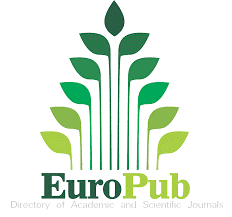Ant diversity patterns in the cloud forest of the Arcoiris and El Madrigal reserves, Ecuador.
Keywords:
cloud forest, frecuency, litter, ants, richnessAbstract
In Ecuador it is still necessary to continue studying biodiversity, especially in subjects that have been little studied, such as insects. The purpose of this study is to know the richness, abundance and functional groups of ants in the cloud forests of the Arcoíris and El Madrigal Reserve. By means of the All Protocol, 19 species of ants included in 15 genera were collected. Myrmicinae was the subfamily with the highest number of species and genera, followed by the subfamily Ponerinae. ICE, Chao 2 and Jacknife 2 diversity estimators were applied, obtaining 91.6% of the estimated richness for Arcoíris and 63.1% of the estimated richness for El Madrigal. Intermediate diversity (Shannon) and low species dominance (Simpson) were recorded for both sites. In Arcoíris and El Madrigal, 11 and 12 ant species were collected, respectively, of which 4 species are shared, 79 % of the total species are unique and 68 % are rare species. Species composition was dissimilar in both sites, being 0.3 the Sørensen similarity coefficient and 0.75 the complementarity dissimilarity coefficient. In the functional groups, the most numerous guilds were nomadic hunters (El Madrigal) and omnivores (Arcoíris). Two species not recorded in Ecuador, one not recorded since the 1930s and three species new to science were captured.References
Arbea, I., y Blasco, J. (2001). Ecología de los Colémbolos (Hexapoda, Collembola) en Los Monegros (Zaragoza, España). Boletín de la Sociedad Entomológica Aragonesa 28(2001): 35-48.
Bestelmeyer, B., Agosti, D., Alonso, E., Brand, C., Brown, W., Delabie, J., y Silvestre, R. (2000). Field Techniques for the Study of Ground-Dwelling Ants: An Overview, Description, and Evaluation. Pp. 122-144. En: D. Agosti., J. Majer., L. Alonso y T. Schultz (Eds) Ants: Standard Methods for Measuring and Monitoring Biodiversity. Smithsonian Institution Press
Bolton, B. (2014). An Online Catalog of the Ants of the World. AntCat 5(6):14pp (en línea) URL: http://www.antcat.org.
Borror, D., Triplehorn C., y Johnson, N. (1992). Study of Insects. Saunders College Publishing.
Pensilvania, EEUU. 875 p.
Branstetter, M. y Sáenz, L. (2012). Biodiversidad de Guatemala: Las Hormigas (Hymenoptera: Formicidae) de Guatemala. Editorial: Cano B y C. Schuster. Publicado por Universidad del Valle de Guatemala. 50p.
Brehm, G., Colwell, R., y Kluge, J. (2007). The role of environment and mid-domain effect on moth species richness along a tropical elevational gradient. Global Ecology and Biogeography 16(2):205-219.
Brown, R. (1973). A comparison of the Hylean and Congo-West African rain forest ant faunas. Pp. 161-185. En: B. Meggers., E. Ayensu y W. Duckworth (Eds) Tropical forest Ecosystems in Africa
and South America: A comparative review. Smithsonian Institution Press. Washington, EEUU.
Brühl, C., Mohamed, M., y Linsenmair, K. (1999). Altitudinal distribution of leaf litter ants along a transect in primary forests on Mount Kinabalu, Sabah, Malaysia. Journal of Tropical Ecology
(3):265-277.
Bussmann, R. (2005). Bosques andinos del Sur de Ecuador, clasificación, regeneración y uso. Revista Peruana de Biología 12(2):203-216.
Bussmann, R. (2006). Manteniendo el balance de naturaleza y hombre: La diversidad florística andina y su importancia para la diversidad cultural-ejemplos del Norte de Perú y Sur de
Ecuador. Arnaldoa 13(2):382-397.
Bustos, J., y Ulloa, P. (1997). Mirmecofauna y perturbación en un bosque de niebla Neotropical- Colombia. Revista de Biología Tropical 45(1):259-266.
Castillo, M., Cueva, D., Aguirre, N., y Gunter, S. (2007). Propagación vegetativa de especies de la familia Podocarpaceae. Bosques de Latitud Cero 1(3):3-5.
Castro, S., Vergara, C., y Arellano, C. (2008). Distribución de la riqueza, composición taxonómica y grupos funcionales de hormigas del suelo a lo largo de un gradiente altitudinal en el refugio de vida silvestre Laquipampa Lambayeque-Perú. Ecología Aplicada 7(1-2):89-103.
Centro Integrado de Geomática Ambiental (CINFA). (2006). Herbario Reinaldo Espinosa y Carrera de Ingeniería Forestal. 2006. Estado de Conservación de Áreas Protegidas y Bosques
Protectores de Loja y Zamora Chinchipe y Perspectivas de Intervención. Universidad Nacional de Loja. Ecuador. 586 p.
Colwell, R., y Coddington, J. (1994). Estimating terrestrial biodiversity trough extrapolation. Philosophical Transactions of the Royal Society 345(1311):101-118.
Colwell, R. 2009. EstimateS: Statistical estimation of species richness and shared species from samples. Version 9.0. User’s Guide and application. Disponible en: purl.oclc.org/estimates
Cuesta F. y M. Becerra. (2012). Biodiversidad y Cambio climático en los Andes: Importancia del monitoreo y el trabajo regional. Revista Virtual REDESMA 6(1):876-976.
Del Toro, I. (2013). Diversity of eastern North American ant communities along environmental gradients. Plos one 8(7):1-8.
Dangles O., A. Barragán., R. Cárdenas., G. Onore y K. Keil. (2009). Entomology in Ecuador: Recent developments and future challenges. Annales de la Société entomologique de France.
International Journal of Entomology 45(4):424-436
Delsinne, T., y Arias, T. (2012). Influencia de la humedad hojarasca en la eficiencia del método de Winkler para la extracción de hormigas. Entomological Society of America 12(1):1-7.
Delsinne, T., Arias, T., Jacquemin, J., Laurent, Y., Bachy, I., y Leponce, M. (2012). Subfamilias y géneros de hormigas (Hymenoptera: Formicidae) del Parque Nacional Podocarpus,
Ecuador. URL: http://hdl.handle.net/2013/ULB-IPOT:oai:dipot.ulb.ac.be:2013/138274 Emery, C. (1875). Ueber hypogeische Ameisen. Stettiner Entomologische Zeitung 37(1): 71-76.
Estrada, C., y Fernández, F. (1999). Diversidad de hormigas (Hymenoptera: Formicidae) en un gradiente sucesional del bosque nublado (Nariño, Colombia). Revista de Biología Tropical
(2):189-201.
Feeley K. y M. Silman. (2010). Biotic attrition from tropical forests correcting for truncated temperature niches. Global Change Biology 16(6):1830-1836.
Fisher, B. (1996). Ant diversity patterns along an elevational gradient in the Reserve Naturelle Integrale d´Andringitra, Madagascar. Fieldiana Zoology 85(2):93-108.
Fisher, B. (1999). Ant diversity patterns along an elevational gradient in the Réserve Naturelle Intégrale d´Andohahela, Madagascar. Fieldiana Zoology 94(2): 129-147.
Fisher, B. (2002). Ant diversity patterns along an elevational gradient in the Réserve Spéciale de Manongarivo, Madagascar. Pp. 311-327. En: Gaultir L. y S. Goodman (Eds) Inventarie
Floritique et Faunistique de la Réserve Spéciale de Manongarivo. Ambanja, Madagascar.
Folgarait, P. (1998). Ant biodiversity and its relationship to ecosystem functioning: a review. Biodiversity and Conservation 7(9):1221-1244.
Frith, D., y Frith, C. (1990). Seasonality of litter invertebrate populations in an Australian upland tropical rainforest. Biotropica 22(2):181-190.
Gálvez, J., Ordoñez, O., y Bussmann, R. (2003). Estructura del bosque montano perturbado y noperturbado en el Sur de Ecuador Structure of disturbed and un disturbed mountain forests in
Southern. Lyonia 3(1):83-98.
Gliessman, S. (2002). Agroecología: Procesos ecológicos en agricultura sostenible. Diversidad y estabilidad del agroecosistema. Editorial LITOCAT Turrialba. Costa rica. 359 p.
Gotelli y Colwell. (2001). Quantifying biodiversity: procedures and pitfalls in the measurement and comparison of species richness. Ecology Letters 4(4):379-391.
Guerrero, R., y Sarmiento, C. (2010). Distribución altitudinal de hormigas (Hymenóptera, Formicidae) en la vertiente oroccidental de la Sierra Nevada de Santa Marta. Acta Zoológica Mexicana 26(2):279-302.
Hölldobler, B., y Wilson, E. (1990). The ants. The Belknap Press of Harvard University Press, Cambridge. Massachusetts, EEUU. 896 pp.
Instituto Nacional de Meteorología e Hidrología INAMHI. (2000-2010). Anuarios Meteorológicos. Quito, Ecuador.
Kaspari, M. (2003). Introducción a la ecología de las hormigas. Pp. 97-112. En: Fernández F (Eds) Introducción a las hormigas de la región Neotropical. Bogotá, Colombia.
Kaspari, M. y Weiser, M. (2000). Ant activity along moisture gradients in a Neotropical forest. Biotropica 32(4):703-711.
Kershaw M., Mace, G., y Willlams, H. (1995). Threatened status, rarity, and diversity as alternative selection measures for
rotected areas: a test using Afrotropical antelopes. Conservation
Biology 9(2):324-334.
Kiss, K., y Brauning, A. (2008). El bosque húmedo de montaña: Investigaciones sobre la diversidad de un ecosistema de montaña en el Sur del Ecuador. Proyecto de la Fundación Lattke, J., y Aguirre, N. (2015). Two New Strumigenys F. Smith (Hymenoptera: Formicidae: Myrmicinae) from Montane Forests of Ecuador. Sociobiology y 62(2): 175-180.
Lattke, J., y Rodríguez, E. (2012). Diversidad de hormigas en un gradiente altitudinal de la Cordillera de La Costa, Venezuela (Hymenóptera:Formicinae). Boletín de la Sociedad Entomológica
Aragonesa 50(2012):295-304.
Lattke, J., y Riera, M. (2012). Diversidad de hormigas (Hymenoptera: Formicidae) en la hojarasca y suelo de selvas nubladas de la Cordillera de la Costa, Venezuela. Métodos en Ecología y sistemática 7(1):20-34.
Levings, S. (1983). Seasonal, annual, and among-site variation in the ground ant community of a deciduous tropical forest: Some causes of patchy species distributions. Ecological Monographs
(4):435-455.
Longino, J., y Colwell, R. (2011). Density compensation, species composition, and richness of ants on a neotropical elevational gradient. Ecosphere 2(3):1-20.
Magurran, A. (1998). Ecological diversity and its measurement. Princeton University Press. New Jersey. 179 p.
Magurran, A. (2004). Measuring Biological Diversity. Editorial ilustrada, reimpresa. Oxford, EEUU. 256 p.
Majer J., Orabi G., y Besivac, L. (2007). Ants pass the ioindicator scorecard. Myrmecological News 10:69-76.
Moreno, C. (2001). Métodos para medir la biodiversidad. Primera Edición. Programa Iberoamericano de Ciencia y Tecnología para el Desarrollo. Zaragoza, España. 89 pp.
Narendra, A., G. Heloise., y Musthak, T. (2010). Structure of ant assemblages in Western Ghats, India: role of habitat, disturbance and introduced species. The Royal Entomological Society 4(2):132-141.
Olson, D. (1991). A Comparison of the efficacy of litter sifting and pitfall traps for sampling leaf litter ants (Hymenoptera: Formicidae) in a Tropical Wet Forest, Costa Rica. Biotropica
(2):166-172.
Olson, D. (1994). The distribution of leaf litter invertebrates along a Neotropical altitudinal gradient. Journal of Tropical Ecology 10(2):129-150.
Paredes, J., Arias, M., Flowers, W., Medina, M., Herrera, P., y Peralta, E. (2011). Medición de la Biodiversidad Alfa de Insectos en el Bosque “Cruz del Hueso” de Bucay, Guayas-Ecuador.
Revista Lyonia 5(6):234-267.
Perfecto, I. (1991). Ants (Hymenoptera, Formicidae) as natural control agents of pests in irrigated maize in Nicaragua. Entomological society of America 84(1): 65-70.
Ribas, C., Campos, R., Schmidt, F., y Solar, R. (2012). Ants as indicators in Brazil: a review with suggestions to improve the use of ants in environmental monitoring programs. Psyche 2012:1-
(en línea) URL: http://www.hindawi.com/journals/psyche/2012/636749
Romero, H y Jaffe, K. 1989. A comparison of methods for sampling ants (Hymenoptera, Formicidae) in savannas. Biotropica 21(4):348-352.
Wild, A. (2007). Taxonomic Revision of the Ant Genus Linepithema (Hymenoptera: Formicinae). Entomology. London, EEUU.158 p.
Downloads
Published
How to Cite
Issue
Section
License
Copyright (c) 2017 Bosques Latitud Cero

This work is licensed under a Creative Commons Attribution-NonCommercial-ShareAlike 4.0 International License.
This work is published under the Creative Commons Attribution-NonCommercial-ShareAlike 4.0 International (CC BY-NC-SA 4.0) license. This means that users may copy, distribute, and adapt the content, provided that proper credit is given to the authors and the journal. Commercial use of the material is not permitted. Additionally, any derivative work must be distributed under the same license. This license ensures open access to knowledge, promoting the dissemination and reuse of published works for non-commercial purposes, respecting authorship, and ensuring the free circulation of content under fair terms.





























